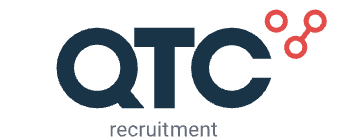Written by Alisa - 5 Minutes reading time
Electrical stimulation signals new hope for stroke patients

More than 100 million people endure conditions resulting from stroke. They may struggle to move, speak, remember, and think clearly — all consequences of a blockage or tear in a blood vessel that cuts off blood flow to the brain. Shutting off the blood supply for just one second can kill 32,000 brain cells.
Half of stroke survivors are younger than 70 years old, but treatment options for post-stroke impairments have traditionally been limited. New technologies, such as neuromodulation — which applies an electrical current to stimulate nerves and brain cells — are helping patients regain function.
“For stroke patients, neuromodulation acts like fertiliser for the brain, enabling new connections to sprout while bypassing the region of damaged tissue,” says John Hanna, stroke medical director and a vascular neurologist at Overlook Medical Center, part of the Atlantic Health System’s Atlantic Neuroscience Institute in New Jersey. “It helps new neural connections to form and function to improve over time, sometimes years after a stroke.”
Specialised care
Overlook, a certified Comprehensive Stroke Center, is one of a few treatment providers in the United States offering stroke patients a novel neuromodulation treatment based on vagus nerve stimulation (VNS). The vagus nerve is the longest cranial nerve, and it travels through the neck to relay information between the brain and the rest of the body.
The treatment features a device implanted under the skin of the patient’s chest. The device uses electrodes to stimulate the vagus nerve and send directed electrical activity into the brain. The combination of this stimulation and stroke therapy exercises can help to restore lost functions in damaged parts of the brain and improve upper limb functioning.
Ronald Benitez, a neurosurgeon and chief of endovascular neurosurgery at Overlook, and his team have implanted the device in twelve patients who have had ischemic strokes caused by a blocked vessel — with others waiting for the procedure.
“We have seen positive outcomes because the VNS device boosts neuroplasticity, the brain’s ability to grow and reorganise its structure,” Hanna explains. In neuroplasticity, neurotransmitters are released in the brain that promote the formation of new neural connections. “Patients have regained the ability to carry out day-to-day functions like eating, writing and knitting. In addition to seeing improvement in the use of upper limbs, we are seeing improvements in lower limb function and patients who have trouble swallowing.”
Overlook is well positioned to offer this specialist and pioneering therapy to stroke patients because it has years of experience of using VNS and other neuromodulation techniques to treat patients with epilepsy.
“We are uniquely positioned to bring new technologies to the people we treat at speed due to the expertise of our staff,” says Yaron Moshel, a neurosurgeon and system medical director of neurosurgery at the centre.
Epilepsy treatment options
Epilepsy, characterised by surges of electrical activity in the brain that lead to reoccurring seizures, is the fourth most common neurological condition. These seizures- which can happen at any time, and can limit ability to work, drive and participate in certain sports and activities. Available medications are not available for about one third of all patients.
“This is why the evolution of neuromodulation treatment options from deep brain stimulation to VNS and a therapy called responsive neurostimulation (RNS) offer patients such hope,” says Benitez. “The RNS devices we offer are minimally invasive treatments that act like pacemakers for the brain. They respond to seizure activity in real time by delivering an electrical circuit on top of the seizure, effectively short-circuiting it.”
The RNS device can eliminate or greatly reduce a patient’s reliance on medication. It can also prevent or significantly reduce the effects of a full seizure, allowing them to lead more normal lives.
The device constantly records electrical activity in the brain, which can be read by waving a wand over the device and uploaded on to the cloud. The more patients using RNS devices, the more stored data is gathered.
“Like VNS for stroke patients, RNS marks a significant milestone in the treatment of epilepsy, providing life-changing options for patients,” Benitez adds. “We are at an inflection point in the evolution of neuromodulation. Technologic advances are making devices smaller and smaller, and artificial intelligence is continually getting better at interpreting data and optimising the responsiveness of these devices.”
Future opportunities
Neuromodulation is one of the fastest-growing areas of medicine, creating opportunities for both patients and specialised healthcare providers.
“Thanks to our deep clinical expertise and years of driving innovation with positive patient outcomes, we are uniquely positioned to help enable these opportunities,” says Moshel. “Our multi-disciplinary team of experts screen for and treat the most complex neurological cases. As treatments become more technical, the process becomes more difficult for patients to understand and navigate – but we help at every step, easing their stress by combining all the different specialties needed for their care in one centre.”
Neuromodulation devices are permanently implanted, which makes long-term follow up an important aspect of patient care. That’s why psychotherapists, psychiatrists, and a dedicated neurology social worker work alongside the vascular surgeons, neurosurgeons, physical therapists and occupational therapists at Overlook. The social worker offers emotional and in-home support post-discharge, assists patients with care-related paperwork and feeds information back to the surgeons who review and monitor the devices.
“With continuing advances in technology and research,” says Hanna, “we hope to see these devices being used to treat more stroke patients at Overlook in the next year and becoming routinely available to all stroke patient candidates in the near future.”
Interested in the dynamic Biotechnology Industry? Let our experts guide your career. Explore how we can help you today! Discover the possibilities here.
Also published on Fiercebiotech.com
Want to stay informed about current Life Science and recruitment news on a regular base? Then register here for free.
